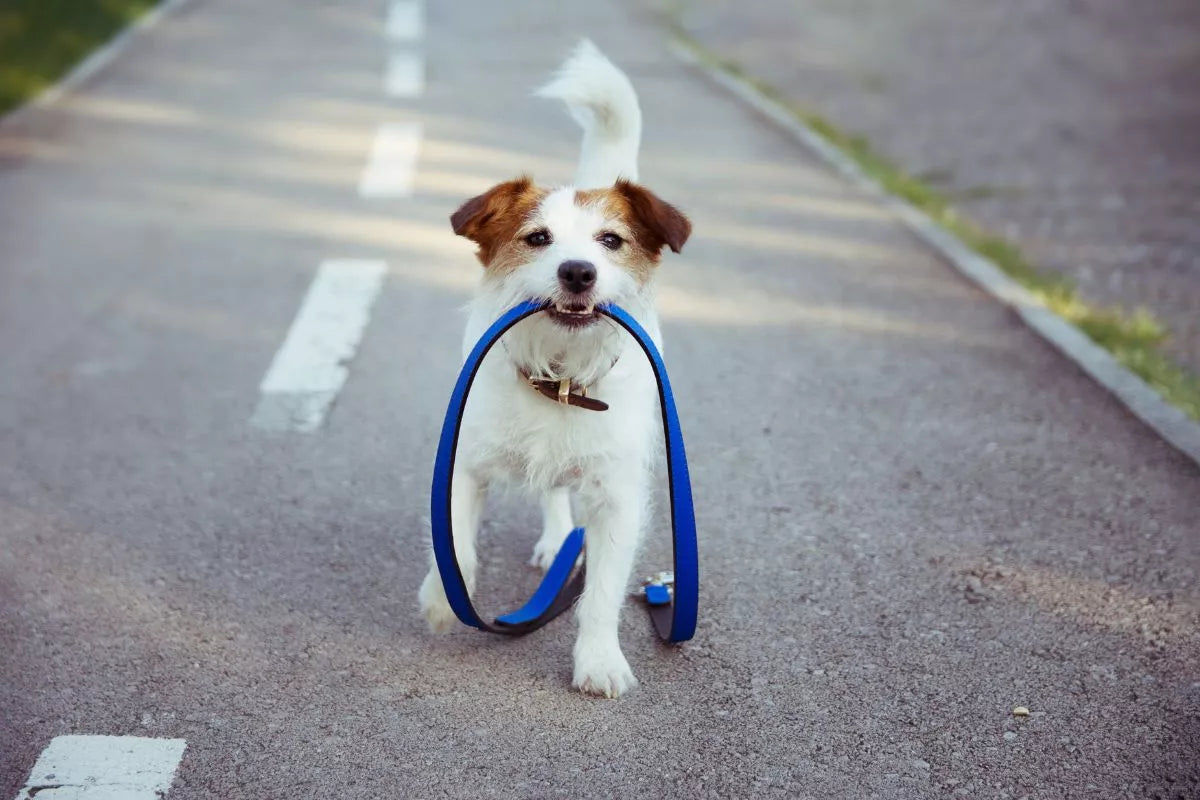When Should I Let My Dog Off The Lead

Knowing when to take your dog off the lead requires careful consideration and should be done in appropriate circumstances to ensure both your dog's safety and the safety of others. Here are some factors to consider when deciding when to let your dog off the lead:
Training: Before allowing your dog off the lead, they should have a strong foundation in basic obedience commands such as "come," "stay," and "leave it." A reliable recall command is especially important, as it allows you to call your dog back to you in potentially dangerous situations.
Secure Environment: Choose a safe and enclosed area for off-leash play, such as a fenced-in dog park or a secure backyard. This prevents your dog from running into traffic or getting lost.
Distractions: Ensure that your dog is capable of ignoring distractions and responding to your commands even when there are other dogs, people, or enticing scents around.
Socialisation: Off-lead play can be beneficial for your dog's socialization skills, allowing them to interact with other dogs and people. However, make sure your dog's interactions are positive and monitored to prevent any potential conflicts.
Traffic and Hazards: Never let your dog off the lead near busy roads, highways, or areas with potential hazards. Even the most well-trained dog can become unpredictable when faced with sudden dangers.
Wildlife and Livestock: In areas with wildlife or livestock, keep your dog on the lead to avoid disturbing or harming local animals and to prevent potential confrontations.
Legal Regulations: Be aware of local laws and regulations regarding dogs off the leash. Some areas may have specific leash laws that you need to follow.
Health and Behavior: If your dog has a history of aggressive behavior, fearfulness, or poor recall, it may be best to keep them on a lead for their safety and the safety of others.
Size and Breed: Some breeds have a strong prey drive or may be less reliable off-lead due to their independent nature. Consider your dog's individual characteristics and breed tendencies.
Time and Place: Choose appropriate times for off-leash activities. Early mornings or late afternoons when parks are less crowded can provide a calmer environment for your dog to enjoy.
Equipment: If you're allowing your dog off the lead in an unfenced area, consider using a long training lead initially to give your dog more freedom while maintaining control.
Supervision: Always keep a close eye on your dog while they're off the leash. Even well-trained dogs can become overexcited or get into situations that require your intervention.
Remember that every dog is different, and what works for one dog might not work for another. It's important to prioritize your dog's safety and the safety of those around you. If you're unsure about when to let your dog off the lead, consider seeking guidance from a professional dog trainer who can provide personalized advice based on your dog's behavior and training level.
Training: Before allowing your dog off the lead, they should have a strong foundation in basic obedience commands such as "come," "stay," and "leave it." A reliable recall command is especially important, as it allows you to call your dog back to you in potentially dangerous situations.
Secure Environment: Choose a safe and enclosed area for off-leash play, such as a fenced-in dog park or a secure backyard. This prevents your dog from running into traffic or getting lost.
Distractions: Ensure that your dog is capable of ignoring distractions and responding to your commands even when there are other dogs, people, or enticing scents around.
Socialisation: Off-lead play can be beneficial for your dog's socialization skills, allowing them to interact with other dogs and people. However, make sure your dog's interactions are positive and monitored to prevent any potential conflicts.
Traffic and Hazards: Never let your dog off the lead near busy roads, highways, or areas with potential hazards. Even the most well-trained dog can become unpredictable when faced with sudden dangers.
Wildlife and Livestock: In areas with wildlife or livestock, keep your dog on the lead to avoid disturbing or harming local animals and to prevent potential confrontations.
Legal Regulations: Be aware of local laws and regulations regarding dogs off the leash. Some areas may have specific leash laws that you need to follow.
Health and Behavior: If your dog has a history of aggressive behavior, fearfulness, or poor recall, it may be best to keep them on a lead for their safety and the safety of others.
Size and Breed: Some breeds have a strong prey drive or may be less reliable off-lead due to their independent nature. Consider your dog's individual characteristics and breed tendencies.
Time and Place: Choose appropriate times for off-leash activities. Early mornings or late afternoons when parks are less crowded can provide a calmer environment for your dog to enjoy.
Equipment: If you're allowing your dog off the lead in an unfenced area, consider using a long training lead initially to give your dog more freedom while maintaining control.
Supervision: Always keep a close eye on your dog while they're off the leash. Even well-trained dogs can become overexcited or get into situations that require your intervention.
Remember that every dog is different, and what works for one dog might not work for another. It's important to prioritize your dog's safety and the safety of those around you. If you're unsure about when to let your dog off the lead, consider seeking guidance from a professional dog trainer who can provide personalized advice based on your dog's behavior and training level.





